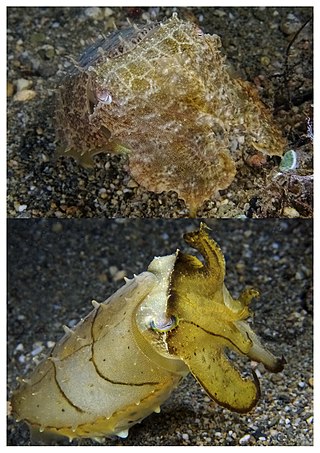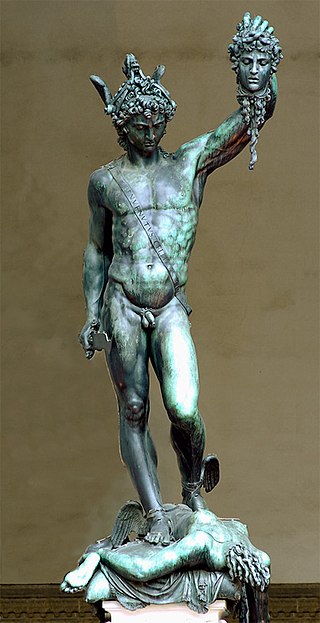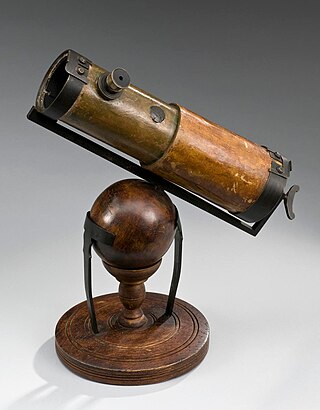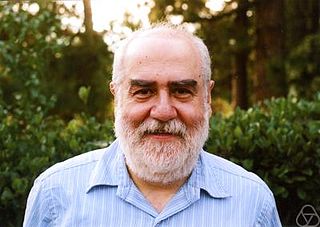Related Research Articles

A cloaking device is a hypothetical or fictional stealth technology that can cause objects, such as spaceships or individuals, to be partially or wholly invisible to parts of the electromagnetic (EM) spectrum. Fictional cloaking devices have been used as plot devices in various media for many years.

Invisibility is the state of an object that cannot be seen. An object in this state is said to be invisible. The phenomenon is studied by physics and perceptual psychology.

A cloak is a type of loose garment worn over clothing, mostly but not always as outerwear for outdoor wear, serving the same purpose as an overcoat, protecting the wearer from the weather. It may form part of a uniform. People in many different societies may wear cloaks. Over time cloak designs have changed to match fashion and available textiles.
Optica is a professional society of individuals and companies with an interest in optics and photonics. It publishes journals and organizes conferences and exhibitions. It currently has about 488,000 customers in 183 countries, including nearly 300 companies.

A metamaterial is any material engineered to have a property that is rarely observed in naturally occurring materials. They are made from assemblies of multiple elements fashioned from composite materials such as metals and plastics. These materials are usually arranged in repeating patterns, at scales that are smaller than the wavelengths of the phenomena they influence. Metamaterials derive their properties not from the properties of the base materials, but from their newly designed structures. Their precise shape, geometry, size, orientation and arrangement gives them their smart properties capable of manipulating electromagnetic waves: by blocking, absorbing, enhancing, or bending waves, to achieve benefits that go beyond what is possible with conventional materials.

Active camouflage or adaptive camouflage is camouflage that adapts, often rapidly, to the surroundings of an object such as an animal or military vehicle. In theory, active camouflage could provide perfect concealment from visual detection.

Sir John Brian Pendry, is an English theoretical physicist known for his research into refractive indices and creation of the first practical "Invisibility Cloak". He is a professor of theoretical solid state physics at Imperial College London where he was head of the department of physics (1998–2001) and principal of the faculty of physical sciences (2001–2002). He is an honorary fellow of Downing College, Cambridge, and an IEEE fellow. He received the Kavli Prize in Nanoscience "for transformative contributions to the field of nano-optics that have broken long-held beliefs about the limitations of the resolution limits of optical microscopy and imaging.", together with Stefan Hell, and Thomas Ebbesen, in 2014.

A cloak of invisibility is an item that prevents the wearer from being seen. In folklore, mythology and fairy tales, a cloak of invisibility appears either as a magical item used by duplicitous characters or an item worn by a hero to fulfill a quest. It is a common theme in Welsh and Germanic folklore, and may originate with the cap of invisibility seen in ancient Greek myths. The motif falls under "D1361.12 magic cloak of invisibility" in the Stith Thompson motif index scheme.

Invisibility in fiction is a common plot device in stories, plays, films, animated works, video games, and other media, found in both the fantasy and science fiction genres. In fantasy, invisibility is often invoked and dismissed at will by a person, with a magic spell or potion, or a cloak, ring or other object. Alternatively, invisibility may be conferred on an unsuspecting person by a sorcerer, witch, or curse. In science fiction, invisibility is often conferred on the recipient as part of a complex technological or scientific process that is difficult or impossible to reverse, so that switching back and forth at frequent intervals is less likely to be depicted in science fiction. Depending on whether the science fiction is hard science fiction or soft science fiction, the depictions of invisibility may be more rooted in actual or plausible technologies, or more on the fictional or speculative end of the spectrum.

In classical mythology, the Cap of Invisibility is a helmet or cap that can turn the wearer invisible, also known as the Cap of Hades or Helm of Hades. Wearers of the cap in Greek myths include Athena, the goddess of wisdom, the messenger god Hermes, and the hero Perseus. Those wearing the Cap become invisible to other supernatural entities, akin to a cloud of mist sometimes used to remain undetectable.

The Isaac Newton Medal and Prize is a gold medal awarded annually by the Institute of Physics (IOP) accompanied by a prize of £1,000. The award is given to a physicist, regardless of subject area, background or nationality, for outstanding contributions to physics. The award winner is invited to give a lecture at the Institute. It is named in honour of Sir Isaac Newton.

Metamaterial cloaking is the usage of metamaterials in an invisibility cloak. This is accomplished by manipulating the paths traversed by light through a novel optical material. Metamaterials direct and control the propagation and transmission of specified parts of the light spectrum and demonstrate the potential to render an object seemingly invisible. Metamaterial cloaking, based on transformation optics, describes the process of shielding something from view by controlling electromagnetic radiation. Objects in the defined location are still present, but incident waves are guided around them without being affected by the object itself.

The history of metamaterials begins with artificial dielectrics in microwave engineering as it developed just after World War II. Yet, there are seminal explorations of artificial materials for manipulating electromagnetic waves at the end of the 19th century. Hence, the history of metamaterials is essentially a history of developing certain types of manufactured materials, which interact at radio frequency, microwave, and later optical frequencies.

Theories of cloaking discusses various theories based on science and research, for producing an electromagnetic cloaking device. Theories presented employ transformation optics, event cloaking, dipolar scattering cancellation, tunneling light transmittance, sensors and active sources, and acoustic cloaking.

Transformation optics is a branch of optics which applies metamaterials to produce spatial variations, derived from coordinate transformations, which can direct chosen bandwidths of electromagnetic radiation. This can allow for the construction of new composite artificial devices, which probably could not exist without metamaterials and coordinate transformation. Computing power that became available in the late 1990s enables prescribed quantitative values for the permittivity and permeability, the constitutive parameters, which produce localized spatial variations. The aggregate value of all the constitutive parameters produces an effective value, which yields the intended or desired results.

Gunther Alberto Uhlmann Arancibia is a mathematician whose research focuses on inverse problems and imaging, microlocal analysis, partial differential equations and invisibility.

Ulf Leonhardt, FRSE is a German and British scientist. In 2006, he published the first scientific paper on invisibility cloaking with metamaterials at the same time Pendry's group published their paper in the journal Science. He has been involved with the science of cloaking objects since then.
Andrea Alù is an Italian American scientist and engineer, currently Einstein Professor of Physics at The City University of New York Graduate Center. He is known for his contributions to the fields of optics, photonics, plasmonics, and acoustics, most notably in the context of metamaterials and metasurfaces. He has co-authored over 650 journal papers and 35 book chapters, and he holds 11 U.S. patents.
Illusion optics is an electromagnetic theory that can change the optical appearance of an object to be exactly like that of another virtual object, i.e. an illusion, such as turning the look of an apple into that of a banana. Invisibility is a special case of illusion optics, which turns objects into illusions of free space. The concept and numerical proof of illusion optics was proposed in 2009 based on transformation optics in the field of metamaterials. It is a scientific disproof of the idiom 'Seeing is Believing'.
Greg Gbur is an American author and physicist who specializes in the study of classical coherence theory in optical physics. He is a full professor at the University of North Carolina at Charlotte in the Department of Physics and Optical Science.
References
- ↑ Brownlee, John (October 1, 2014). "The First Practical Invisibility Cloak Is Here". Fast Company.
- ↑ "How To Make An 'Invisibility Cloak' At Home For Under $100". Business Insider.
- ↑ Choi, Joseph S.; Howell, John C. (December 1, 2014). "Paraxial ray optics cloaking". Optics Express. 22 (24): 29465–29478. arXiv: 1409.4705 . Bibcode:2014OExpr..2229465C. doi:10.1364/OE.22.029465. PMID 25606881. S2CID 15457479.
- ↑ "Harry Potter's 'invisibility cloak' cracked: University of Rochester scientists create masking device". syracuse. September 28, 2014.